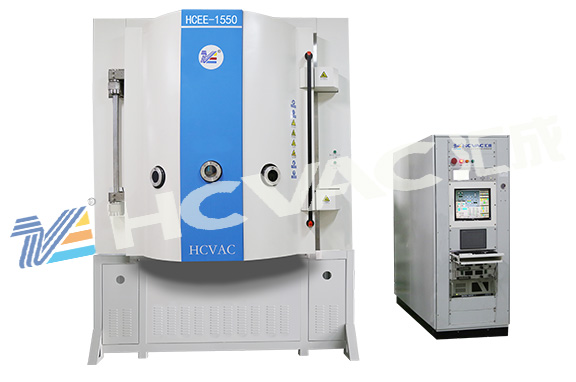Optical pvd coating machine, as the name suggests, are closely related to light. For example, glasses lenses, mobile phone screens, computer screens, electronic product cameras, colorful mobile phone covers, etc. are all coated with an optical film layer by an optical vacuum coating machine. The effects achieved are high transparency, high reflection, scratch resistance, wear resistance, antifouling, waterproof and other effects. Widely used in daily life, with the development of the times, optical technology is also constantly innovating to meet people's high-quality life. The following is a brief introduction to the principle of optical coating.

Optical thin films are realized in a high-vacuum coating chamber. Conventional coating processes require elevated substrate temperatures (typically around 300°C); more advanced techniques, such as ion-assisted deposition (IAD), can be performed at room temperature. The IAD process not only produces films with better physical properties than conventional coating processes, but can also be applied to substrates made of plastic. The traditional method of thin film deposition has been thermal evaporation, either with resistively heated evaporation sources or with electron beam evaporation sources. The film properties are mainly determined by the energy of the deposited atoms, which are only about 0.1 eV in conventional evaporation. IAD deposition results in direct deposition of ionized vapor and adds activation energy to the growing film, typically on the order of 50 eV. The ion source improves the film properties of conventional electron beam evaporation by directing the beam from the ion gun to the substrate surface and the growing film.
The optical properties of thin films, such as refractive index, absorption and laser damage threshold, mainly depend on the microstructure of the film layer. Film material, residual gas pressure, and substrate temperature can all affect the microstructure of the film. If the evaporatively deposited atoms have low mobility on the substrate surface, the film will contain micropores. When the film is exposed to moist air, these pores are gradually filled with water vapor.
Packing density is defined as the ratio of the volume of the solid portion of the film to the total volume of the film, including voids and pores. For optical films, the packing density is usually 0.75 to 1.0, mostly 0.85 to 0.95, and rarely reaches 1.0. Packing densities less than 1 cause the refractive index of the evaporated material to be lower than that of its bulk. During deposition, the thickness of each layer is monitored by an optical or quartz crystal. Both techniques have their own advantages and disadvantages, which are not discussed here. What they have in common is that they are all used in a vacuum when the material is evaporated, so the index of refraction is the index of refraction of the evaporated material in vacuum, not the index of refraction of the material exposed to moist air. The moisture absorbed by the film replaces the pores and voids, causing the refractive index of the film to increase. In optical
pvd coating machine coating, since the physical thickness of the film remains unchanged, this increase in refractive index is accompanied by a corresponding increase in optical thickness, which in turn causes the spectral characteristics of the film to shift to the long wavelength direction. To reduce this spectral shift caused by the volume and number of micropores within the film layer, energetic ions are employed to transfer their momentum to the evaporating material atoms, thereby greatly increasing the mobility of the material atoms during condensation at the substrate surface .



